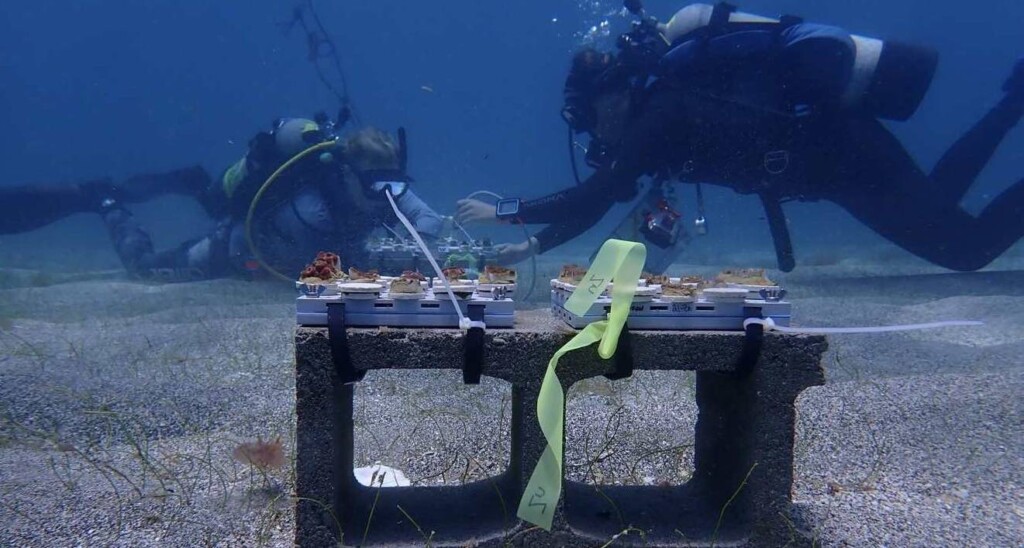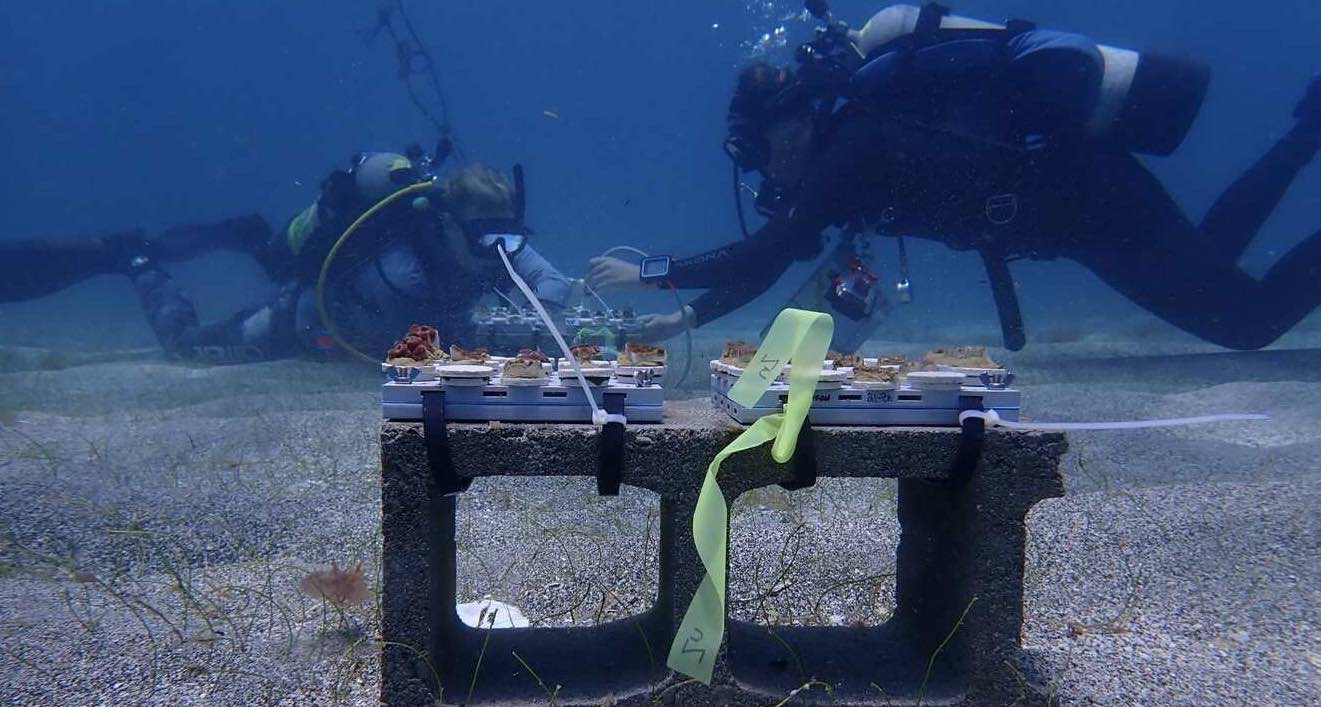
Could a multivitamin boost the health and resilience of coral reefs? Preliminary testing says that, like humans, these critical ecosystems rely on nutrients in the environment surrounding them.
Researchers at the prestigious Woods Hole Oceanographic Institution (WHOI) have been lab testing nutrient-infused tiles to determine whether they would boost the immune system of corals, helping them withstand stressors like warming ocean temperatures that lead to coral bleaching, and better recover from extreme climate events such as hurricanes.
The team plans to embed these nutrient-infused tiles in the concrete structure of a 20 sq. meter (216 sq. ft.) artificial reef, designed by experts at the University of the Virgin Islands (UVI).
“We are studying how corals react when grown on substrates that have been infused with essential metal micronutrients, like manganese, zinc, and iron,” explained Colleen Hansel, a senior scientist and marine chemist at WHOI.
“The rapidly warming waters coupled with an active hurricane season has made it difficult to conduct field trials of our substrates. But preliminary data collected during more than a year of lab experiments shows that corals that had the early benefit of multivitamins were more resistant and resilient to heat stress.”
The structure will provide a solid foundation to plant juvenile corals and for coral larvae to settle on, while the tiles will disperse essential nutrients and vitamins into the surrounding waters for them to absorb, building their resilience toward environmental stressors.
“The artificial reef we’re building is going in next to a natural reef that has been severely impacted by marine heat waves and extreme storm events,” explained Marilyn Brandt a coral disease ecologist at the University of the Virgin Islands. “The artificial reef will protect the shoreline from storm surge and erosion while providing habitat for corals struggling from climate change, as we work toward restoring natural reefs in the area.”
GOOD REEF READS:
- Scientists Discover ‘World’s Largest’ Coral –the Size of 5 Tennis Courts
- First-Ever Coral Crossbreeding Hopes to Mimic the Resilience of an ‘Invincible’ Reef in Honduras
- Full Recovery for Coral Reef Within 4 Years – The Speed of Restoration They Saw was ‘Incredible’
- Volunteers ‘De-seaweeding’ Results in Dramatic 600% Improvement of Coral Regrowth
- Parts of the Great Barrier Reef Show Highest Coral Cover in 36 Years
Field testing is still needed to ensure that additional nutrients in the environment don’t cater to one specific type of coral or promote the growth of undesired or invasive species. Brandt, Hansel, and their colleagues hope utilizing these nutrient tiles, alongside an artificial reef structure, will create a diverse environment for reefs and species that rely on them.
“It is important to create an ecologically sound, diverse coral reef,” Hansel continued. “We need to be sure an artificial reef looks and sounds as similar to a natural reef as possible. That doesn’t consist of just coral, but also sponges, anemones, and other biogeochemical components of the reef ecosystem. These interactions and feedback are necessary to make the whole habitat healthy.”
The WHOI has been behind a number of coral breakthroughs in recent years. This spring, the institute found that broadcasting the sound of a healthy coral reef actively accelerated coral growth in a degraded reef.
“A healthy coral reef is noisy, full of the croaks, purrs, and grunts of various fishes and the crackling of snapping shrimp. Scientists believe that coral larvae use this symphony of sounds to help them determine where they should live and grow,” a statement from the institute read at the time.
SHARE This Innovative Study In Coral Nutrition With Your Friends…




















